Top 25+ Scrum Master Interview Questions and Answers 2025
4.9 out of 5 based on 12357 votesLast updated on 24th Mar 2025 21.7K Views
- Bookmark

This blog covers key Scrum Master interview questions and answers to help you excel in your interview and stand out from the competition.

If you are preparing for a Scrum Master interview in 2025, it’s essential to be well-prepared with the right answers and knowledge. Thus, opting for a Scrum Master Certification can help you ace this field. Companies are increasingly looking for candidates who are not only experienced but also up-to-date with the latest practices in Agile and Scrum. In this article, we will cover the most common Scrum Master interview questions and answers to help you ace your interview and stand out from the competition.
1. What is Scrum?
Scrum is an Agile framework that helps teams develop products in short, iterative cycles called sprints. It focuses on collaboration, flexibility, and delivering value quickly. The key roles in Scrum are the Scrum Master, Product Owner, and the Scrum Team. The Scrum process involves regular meetings and reviews to ensure the team stays on track and delivers high-quality work. CSM Training is essential for anyone looking to become a certified Scrum Master and help teams adopt Agile practices effectively.
2. What are the key responsibilities of a Scrum Master?
As a Scrum Master, you are responsible for facilitating the Scrum process, ensuring the team follows Scrum practices, removing obstacles, and helping the team improve continuously. You act as a shield between the team and external disruptions to ensure the team’s focus remains intact. For those in Noida, CSM Training in Noida offers a comprehensive learning experience with practical insights into Scrum processes.
3. What is the difference between Scrum and Agile?
Agile is a set of principles that guide teams in delivering value through iterative and incremental development. Scrum is one of the frameworks used to implement these principles. Scrum is structured with specific roles, events, and artifacts like the Product Backlog, Sprint Backlog, and Increment, which makes it easier to adopt Agile practices in the team.
4. Can you explain the roles in Scrum?
There are three primary roles in Scrum:
- Product Owner: The person responsible for defining and prioritizing features and requirements in the Product Backlog.
- Scrum Master: The facilitator of the Scrum process, ensuring that the team follows Scrum practices, removes obstacles, and improves continuously.
- Scrum Team: The self-organizing group of professionals who work together to deliver the product increment during each sprint.
5. What are the Scrum ceremonies?
The main Scrum ceremonies include:
- Sprint Planning: The team decides on the tasks and user stories they will work on during the sprint.
- Daily Standup: A brief meeting where team members discuss what they did yesterday, what they will do today, and any obstacles they are facing.
- Sprint Review: A meeting to review the progress made during the sprint and gather feedback from stakeholders.
- Sprint Retrospective: A meeting where the team reflects on the sprint to identify what went well and where they can improve.
6. What is the Definition of Done (DoD)?
The Definition of Done (DoD) is a shared understanding within the team of what it means for a task to be considered complete. This includes criteria like code being written, tested, reviewed, and documented. It ensures that everyone has the same understanding and prevents incomplete work from being considered "done." Certified Scrum Master Training in Gurgaon helps you learn the skills you need to become a great Scrum Master and succeed in Agile projects.
7. How do you handle conflicts in the Scrum team?
As a Scrum Master, I focus on fostering a culture of open communication and trust. If a conflict arises, I encourage team members to discuss the issue openly, helping them find a collaborative solution. Preparing for a Scrum interview means being ready to answer common scrum interview questions, which test your understanding of the Scrum framework.
8. What is a Sprint Backlog?
The Sprint Backlog is a list of tasks that the team has committed to working on during a particular sprint. It is derived from the Product Backlog, and it defines what work needs to be done to achieve the sprint goal. The team works collaboratively to complete the items in the Sprint Backlog during the sprint.
9. How do you prioritize tasks in Scrum?
In Scrum, the Product Owner is responsible for prioritizing tasks based on the value they bring to the business. As a Scrum Master, I ensure that the team focuses on the highest-priority tasks first and that we address any blockers preventing progress. Practicing scrum interview questions can help you demonstrate your problem-solving skills and your ability to lead Scrum teams effectively.
10. What are Scrum artifacts?
Scrum artifacts are tools used to provide transparency in the Scrum process:
- Product Backlog: A prioritized list of features, improvements, and fixes that need to be implemented for the product.
- Sprint Backlog: A subset of the Product Backlog that the team works on during a specific sprint.
- Increment: The completed work at the end of each sprint, which represents a potentially shippable product.
Also Read This:
What is Scrum and its Modules?
Certified Scrum Master Certification Cost
11. What is the difference between a Product Backlog and a Sprint Backlog?
The Product Backlog contains all the work needed for the product, while the Sprint Backlog is a smaller subset of the Product Backlog. The Sprint Backlog is selected by the team during Sprint Planning and focuses on the tasks to be completed in the current sprint. Interview questions for Scrum Master often revolve around your experience with Scrum ceremonies, such as sprint planning, retrospectives, and daily stand-ups.
12. What is a Burndown Chart?
A Burndown Chart is a visual tool used to track the progress of a sprint. It shows how much work remains to be done and helps the team assess if they are on track to complete the sprint goal. The chart typically shows the remaining work over time, with the goal of having the work "burn down" to zero by the end of the sprint.
13. What is the difference between MVP and MMP?
The Minimum Viable Product (MVP) is the simplest version of the product that is released to gather customer feedback. The Minimum Marketable Product (MMP) is a version of the product that contains all the essential features necessary for launch. As a Scrum Master, I ensure that the team focuses on delivering the MVP first to validate ideas before adding more features.
14. What is a Sprint Retrospective?
The Sprint Retrospective is a meeting that happens at the end of each sprint where the Scrum team reflects on what went well, what didn’t, and how to improve. It is a chance for the team to inspect and adapt the process to continuously improve their efficiency and effectiveness.
15. How would you handle scope creep in Scrum?
Scope creep occurs when additional features or tasks are added to a sprint without proper approval. As a Scrum Master, I work with the Product Owner and stakeholders to ensure that the scope remains fixed during the sprint. If you're an experienced Scrum Master, you’ll face more challenging scrum master interview questions for experienced, where you'll discuss your ability to handle real-world scenarios.
16. How do you ensure the Scrum team remains motivated?
Motivation in a Scrum Team can be fostered by ensuring transparency, involving the team in decision-making, and celebrating successes. I also encourage open communication and help resolve any blockers quickly. Interview questions for Scrum Master will test how well you can coach and mentor a team, removing obstacles to ensure smooth sprint execution.
17. How do you handle a situation where a team member isn’t contributing?
When a team member isn’t contributing, I have one-on-one conversations with them to understand any challenges they might be facing. I work to identify and remove obstacles, whether they are skill-related, personal, or environmental, so that the team member feels empowered and motivated to contribute. Scrum master interview questions for experienced candidates typically focus on how you've managed team dynamics, impediments, and ensured project delivery.
18. What is the purpose of the Daily Standup?
The Daily Standup is a short, focused meeting where the team discusses what they accomplished yesterday, what they plan to do today, and any obstacles they are facing. It helps the team stay aligned and ensures transparency about progress. Interview questions for Scrum Master usually dive into your experience with agile practices, how you handle roadblocks, and how you ensure the team’s progress stays on track throughout the sprint.
19. How do you deal with external interruptions during a sprint?
As a Scrum Master, I act as a shield for the team, protecting them from unnecessary interruptions during a sprint. I work closely with stakeholders to ensure that any external demands or changes are addressed outside of the sprint cycle, allowing the team to remain focused.
20. What is your experience with Scrum tools?
I have experience using Scrum tools like Jira, Trello, and Asana. These tools help manage the Product Backlog, Sprint Backlog, and other Scrum artifacts. They also enable the team to track progress and ensure transparency throughout the sprint.
Related Courses:
Certified Scrum Product Owner Online Training
Professional Scrum Master Online Training
Advanced Certified Scrum Master Online Training
21. What are the three pillars of Scrum?
The three pillars of Scrum are:
- Transparency: Everyone has access to the same information.
- Inspection: The team regularly checks progress to ensure that the project is on track.
- Adaptation: Adjustments are made to improve the process based on feedback and results.
22. How do you track the progress of the Scrum team?
I use tools like Burndown Charts and Sprint Reviews to track the progress of the team. These tools provide real-time visibility into how much work remains and whether the team is on track to meet their goals. During a scrum master interview, expect scrum master questions related to your leadership style and how you facilitate collaboration within the team.
23. What would you do if the Product Owner is unavailable during a Sprint?
If the Product Owner is unavailable, I work with the team to ensure that they can continue making progress. I ensure the team has enough information to move forward and, if necessary, I facilitate communication with other stakeholders to keep the work moving. Be ready to answer scrum master questions on how you handle conflicts, support continuous improvement, and drive the team towards the sprint goals.
24. Why should a Scrum Master be certified?
Getting a Scrum Master Certification helps ensure you understand Scrum practices, tools, and techniques. A Certification boosts your credibility and demonstrates your commitment to following Scrum principles.
25. How do you keep your Scrum knowledge up to date?
I stay updated by attending workshops, taking additional Scrum Master Training, and staying involved in the Agile community. Whether through advanced training or learning from real-world experience, I ensure I keep my knowledge fresh and relevant to the current trends in Scrum.
26. How do you handle conflicts within a Scrum team?
I mediate conflicts by encouraging open communication and understanding both sides. I work with the team to find a mutually acceptable solution.
27. Can you explain how you would facilitate a Sprint Retrospective?
I guide the team in discussing what went well and areas for improvement. I ensure the meeting stays focused and that actionable outcomes are decided.
28. How do you ensure a Scrum team stays focused and delivers within the Sprint?
I facilitate daily stand-ups to check progress and remove any blockers. I ensure clear communication so the team stays focused on their tasks.
29. How do you prioritize tasks in the Product Backlog?
I collaborate with the Product Owner to prioritize based on customer value. We use techniques like MoSCoW to ensure important tasks are worked on first.
30. What steps do you take to ensure continuous improvement in a Scrum team?
I encourage regular reflection in Sprint Retrospectives to identify improvement areas. I also promote a learning culture to help the team improve continuously.
Sum up,
By preparing with these Scrum Master interview questions and answers for 2025, you can confidently approach your next interview. Whether you are looking for Certified Scrum Master Training in Delhi, or any other training opportunity, ensuring you have the right knowledge and certification will give you the best chance at success.
Subscribe For Free Demo
Free Demo for Corporate & Online Trainings.
Your email address will not be published. Required fields are marked *
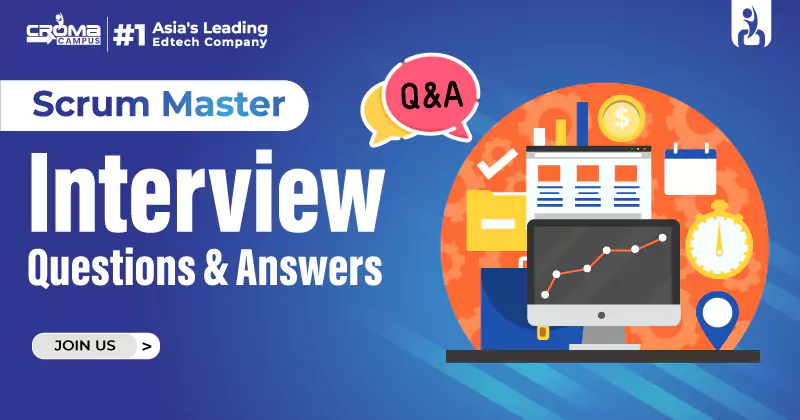
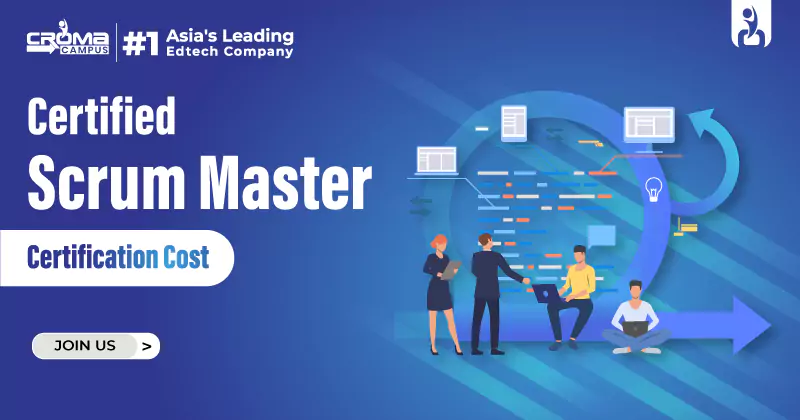

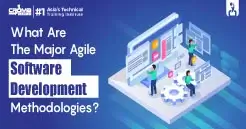
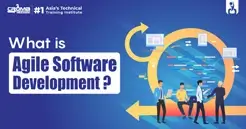
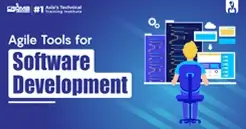

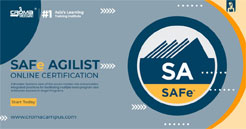

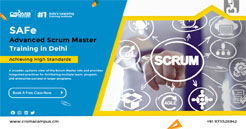

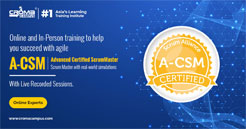









 Master in Cloud Computing Training
Master in Cloud Computing Training